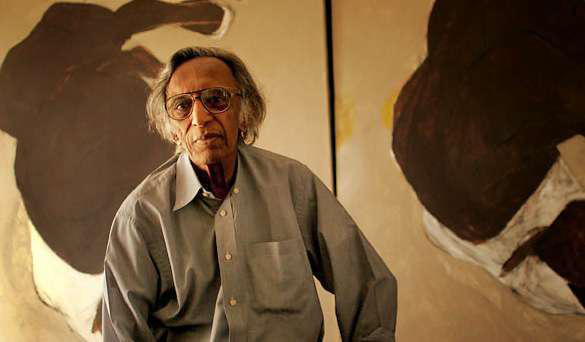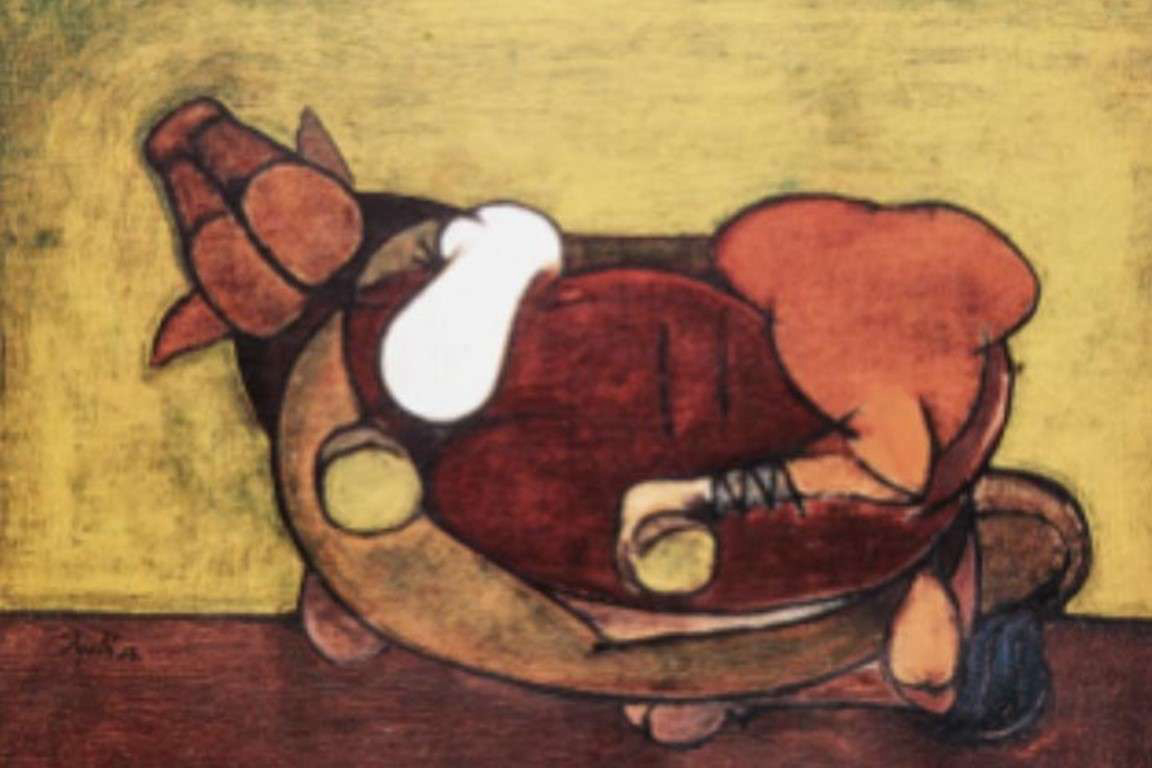
Art is the most significant form of expressing views and wisdom. Many famous Indian artists have been credited for triggering an addition to Indian art, but many have also been forgotten with time. And one of the most promising Indian artists of the post-colonial era was “Tyeb Mehta”. He was notable for his signature style, diagonal series, paintings, and his contribution to Indian cinema. And one of the biggest legacies that he left behind was the price tag that he put on Indian arts. He opened several doors for artists but similarly made the world turn around to take a look at Indian arts.
Tyeb Mehta was born on 26 July 1925 in the Kapadvanji town of Gujarat. His entire family moved to Mumbai, and he developed a liking for cinema and art in the city. But he hadn’t made up his mind on what his profession would be later on in his life. During the partition of 1947, Mehta witnessed the violent act of a mob stoning a man to death. This incident left an unforgettable impression on him, which he would later portray on many of his canvases.
During the initial stages of his career, he got a chance to work as a movie editor at Famous Studio, a cinema laboratory in Mumbai. Tyeb enjoyed his job but soon realized that his passion for art was bigger than that of his passion for cinema. Then he began studying at Sir J. J. School of Art in Mumbai and finished a diploma course in the year 1952. During the stay at Sir J. J. School of Art, he became part of the Progressive Artist's Group along with the legends like M.F. Husain and S.H. Raza.
In the year 1954, Tyeb Mehta shifted to London and stayed there till 1964. There he came in contact with international artists like Francis Bacon and John D. Rockefeller. Meanwhile, in 1959, his first solo exhibition of paintings and sculptures was organized at the Jehangir Art Gallery, Mumbai. While his painting was getting famous in India, he was also ruling the hearts of Americans with his paintings and other art forms. Then he returned to India and started living in Delhi.

After returning to India, he worked as an artist-in-residence at Santiniketan for about a year. When he finally returned to Mumbai, he was a much improved and experienced painter, and his work began expressing the same. The year 1969 was the year when the ‘The Diagonal Series’ was born, which gave him international fame. In 1969, when Mehta was going through a hard time, as he couldn't concentrate to come up with something new and creative. And when his frustration reached its peak, he simply took out a brush and drew a black diagonal line across his canvas, hoping that such an act would relieve him of his frustration. The initial thought of a simple stroke went on to present him with a fresh idea. He then went on to assemble a series of diagonal paintings, in which he divided his stories into two distinct portions.
The mutual themes that he worked with included the likes of a poor rickshaw puller and trussed bulls. Throughout his career, he came up with many impressive works. He created a painting named ‘Falling Figures’ in 1991. It was inspired by his real-life incident when he witnessed a man being stoned to death by a mob. Another world-class work of Tyeb Mehta was a diagonal series painting named ‘Celebration’. In 2002, it was sold for a whopping price of $317,500 (Rs 15 million) at Christie's Auction. Back then, it was the highest sum paid for Indian artwork at an international auction. While his stay at Santiniketan, he came up with several triptych paintings that were collectively known as the Santiniketan Triptych Series.

Tyeb Mehta created a lot of controversies when he made a painting of the demon Mahishasura in an embrace with Goddess Durga. Even after all the controversies, it was still sold for the whopping price of $1.584 million. In Saffronarts's online auction, an Indian auction house, Tyeb Mehta's depiction of Goddess Kali fetched a massive 10 million Indian rupees. In 2005, the chairman of Kuomi Travels Mr. Ranjiy Malkani paid an impressive price of 31 million rupees for Tyeb Mehta's work named ‘Gesture’. It was the highest sum paid by any Indian for Indian art at an auction held in India.
Tyeb Mehta has participated in several international exhibitions like Trenton in The USA, ‘Deuxieme Biennial Internationale de Menton’, ‘Galerie Le Monde de U’ art of Paris, and so on. Even after tasting worldwide fame for his paintings, he never stopped working with his first love, cinema. His three-minute film ‘Koodal’ won the Filmfare Critics' Award in 1970. He was also honored in 1974 at the ‘Prix Nationaleat’, an International Festival in France. His multiple artworks have been displayed at various prominent museums in the entire world. Tyeb Mehta was also awarded honors like Kalidas Samman and Dayawati Modi Foundation Award. He was also awarded one of the most prestigious awards in India with Padma Bhushan in 2007.
Tyeb Mehta was an extraordinary man who lived with the simple flavors of life with an uncomplicated life. He married a woman named Sakina and the couple was blessed with a daughter and a son. He spent most of his life in the suburbs of Mumbai, including his final days. On July 1, 2009, Tyeb Mehta suffered a cardiac arrest and ultimately breathed his last in Mumbai and died as a cultural hero. By evolving as one of the costliest Indian artists ever, Tyeb Mehta became a cultural hero. And thanks to his works which were sold for over a million dollars, his succeeding paintings roared for fame from Indian and foreign art enthusiasts. With massive wealth being invested in Tyeb Mehta's paintings and his fresh Diagonal Series creation, people began taking Indian artists more seriously. He helped to bring a host of Indian artists under the spotlight and Indian arts had an international market and that too a successful one.
___________________________________________________________________
Reference:
(http://tyeb-mehta.com/ Wikipedia)
